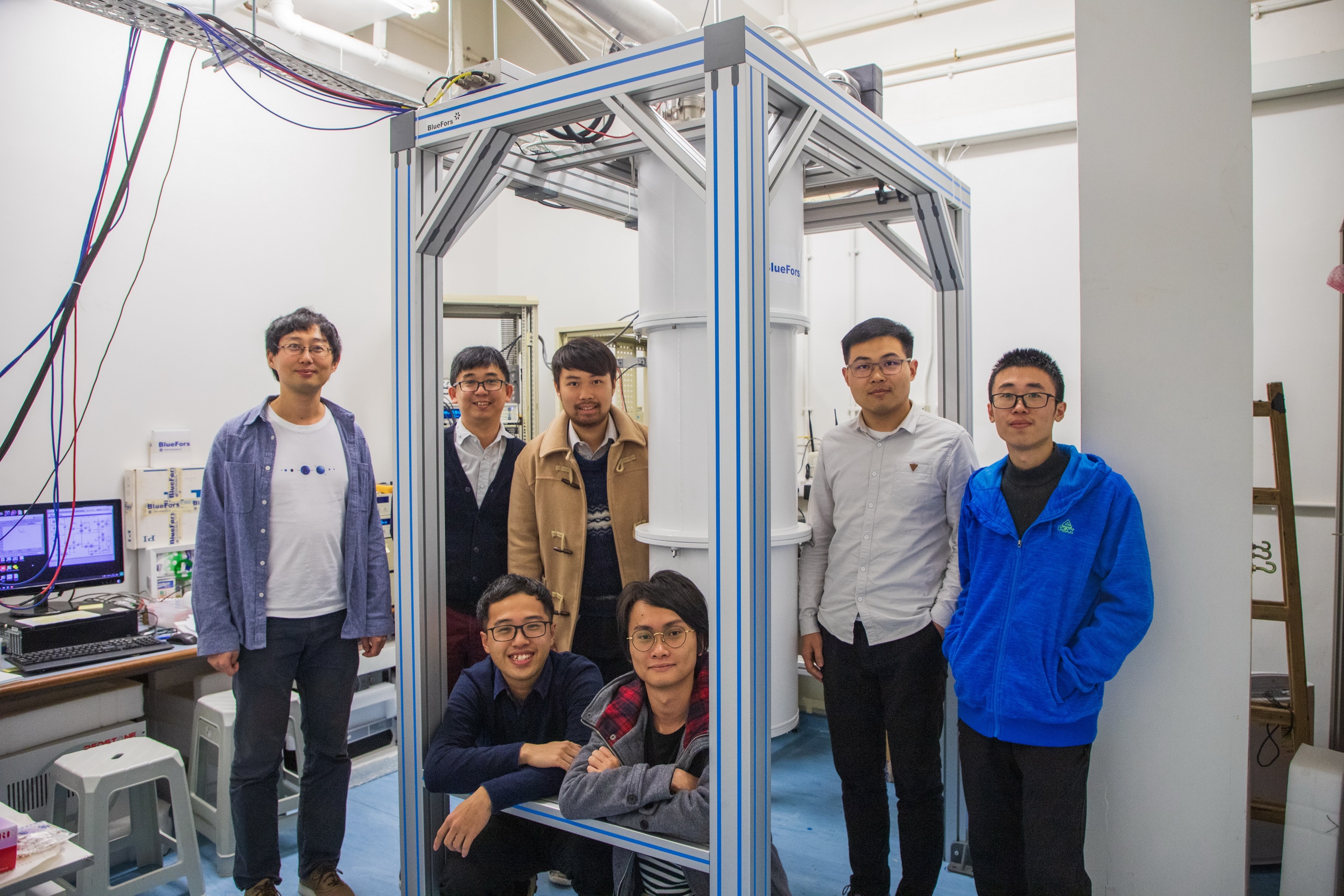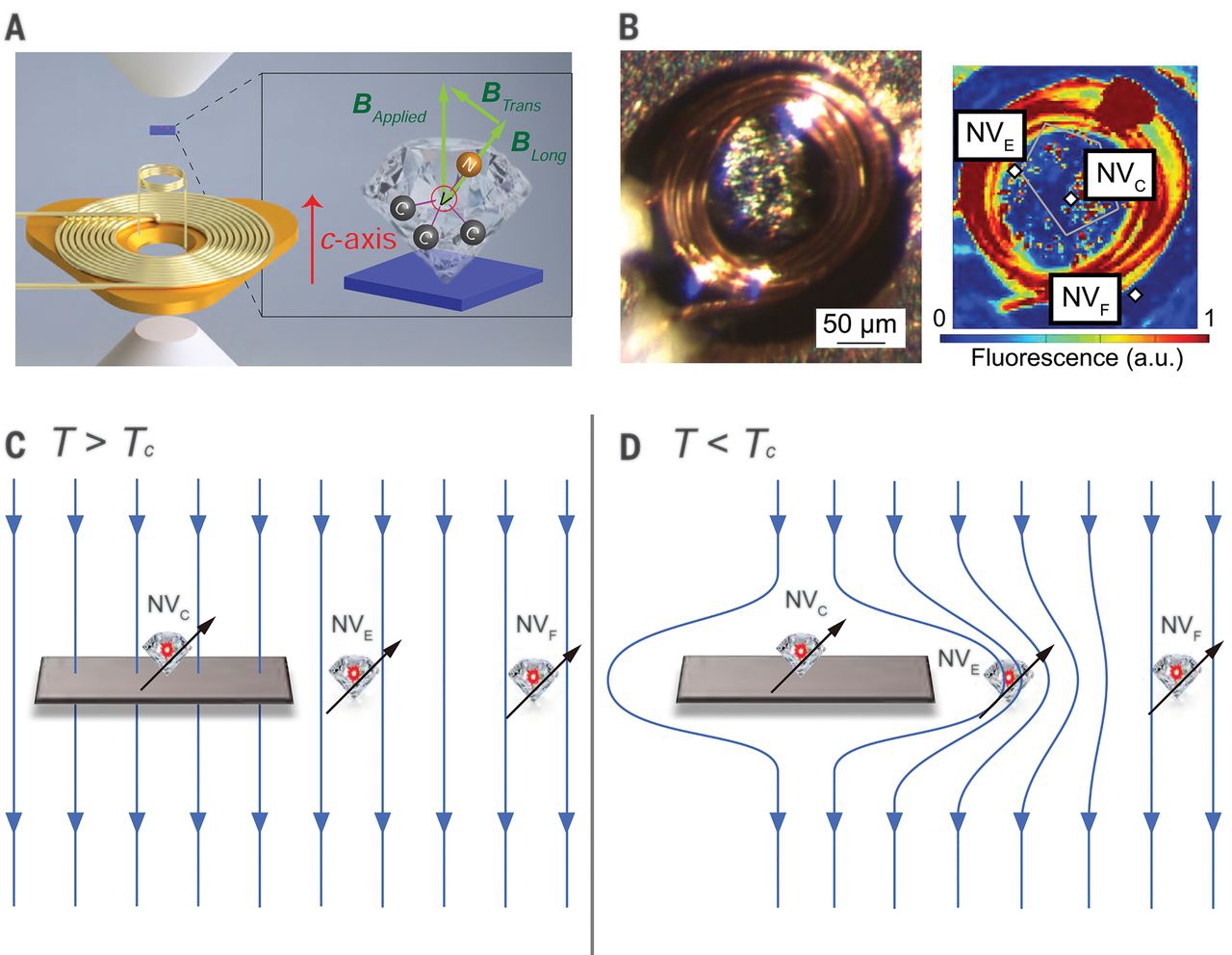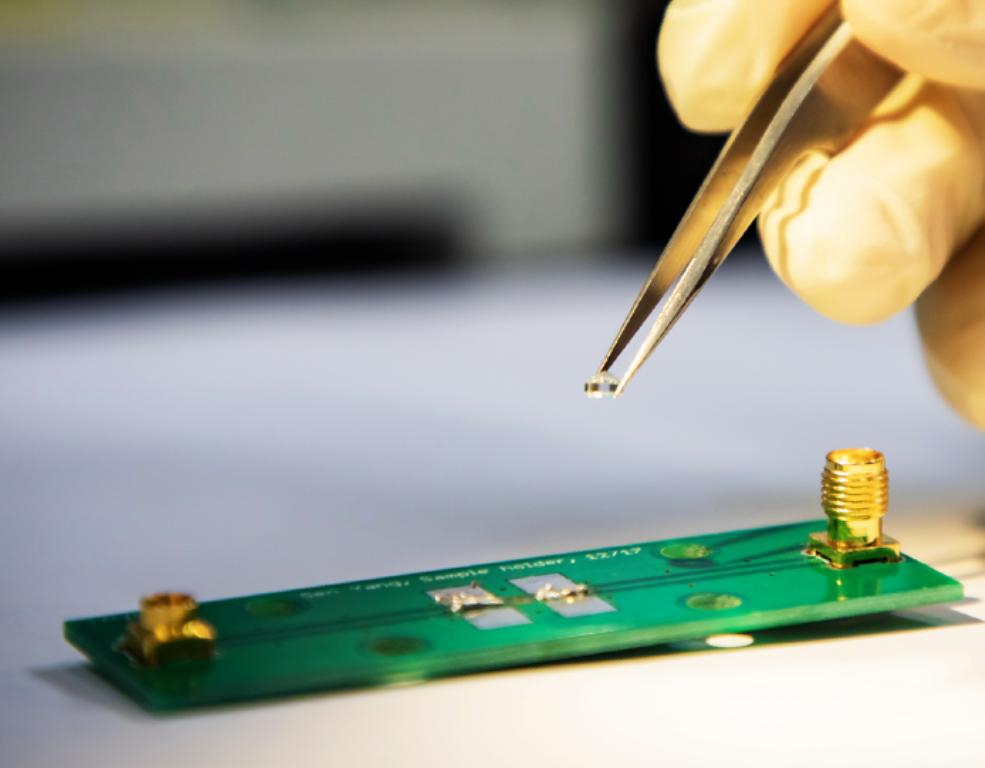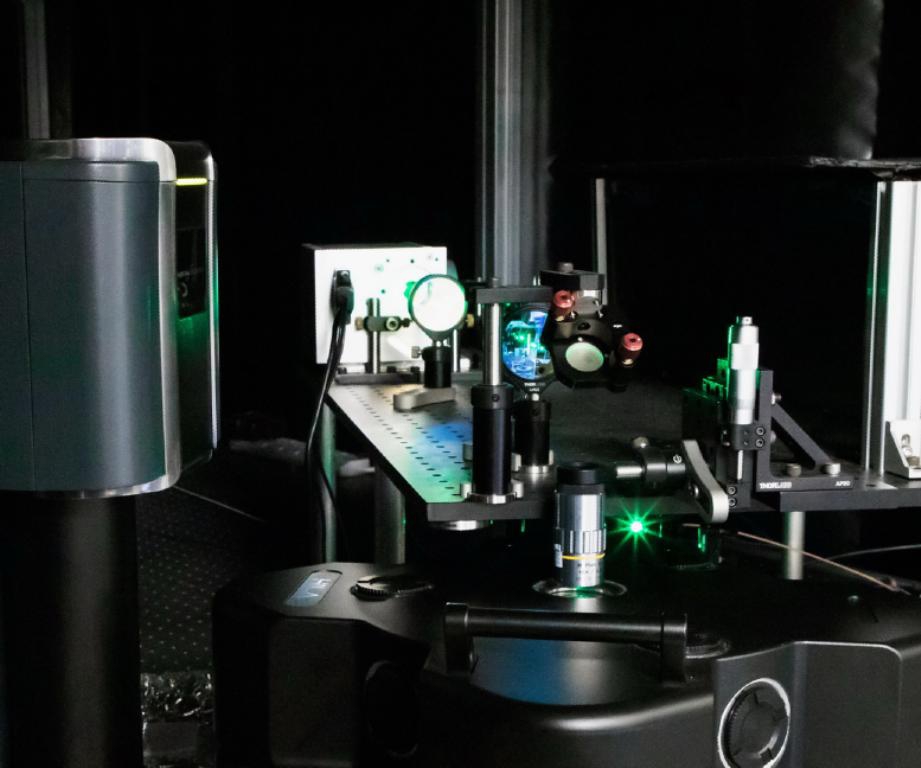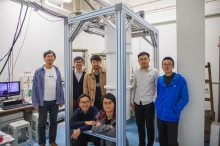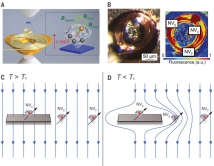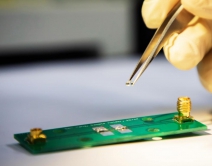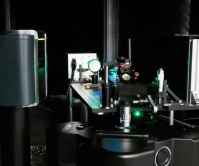CUHK
News Centre
CUHK Physicists Develop Novel Quantum Sensing TechniquesMeasuring Pressure-driven Superconductivity with Nano-diamonds
Research groups led by Professor Swee Kuan Goh, Associate Professor and Professor Sen Yang, Assistant Professor, both from the Department of Physics at The Chinese University of Hong Kong (CUHK) have joined forces in developing and applying colour centres in nano-diamonds as a tool for studying the characteristics of quantum materials under extreme conditions. The colour centres are ultra-sensitive to magnetic field, thereby allowing the researchers to extract key magnetic properties of a topical superconductor under high pressure (tens of thousands times of atmospheric pressure) at cryogenic temperatures (about -266℃, close to absolute zero). The breakthrough offers a novel technique to study quantum materials. The findings have been published in the prestigious journal Science, alongside two similar works reported by the teams from the University of Paris-Saclay and UC Berkeley (note).
Pressurisation is an effective method for studying quantum materials
In recent years, the study of the properties and applications of quantum materials have become an important direction of many researchers. Quantum materials exhibit exotic properties including superconductivity that can often be found at cryogenic temperatures. Apart from their zero resistance that lets electrons pass through without losing any energy, superconductors also expel an applied magnetic field, a phenomenon called the Meissner effect. These properties only emerge at a sufficiently low temperature close to absolute zero. Having superconductors at temperatures attainable without special low-temperature apparatus will certainly be revolutionary. Related applications include superconducting transmission lines, magnetic resonance imaging (MRI), and maglev train.
Applying ultra-high pressure at low temperatures provides a unique approach to tune how electrons interact and is a powerful technique for exploring quantum materials. For example, using high pressure, the superconducting transition temperature range of the samples used in this study, BaFe2(As,P)2, can be adjusted over 30K. By detecting changes in the magnetic field in the vicinity of the sample, researchers can find the effects of low temperature and high pressure on quantum materials, thereby bringing breakthroughs in superconductor research. However, measuring the characteristics of quantum materials under high pressure is extremely challenging. Especially in magnetic measurements, traditional circuits are difficult to operate in high-pressure environments. It is at this juncture that Professor Swee Kuan Goh, an expert in high-pressure low-temperature physics, and Professor Sen Yang, an expert in quantum sensing and quantum optics, joined forces.
Tying up quantum materials research and quantum information science
The colour centre is the most common crystal defect of a diamond and it will make the diamond appear in different colours. In quantum research, the colour centres in diamonds can be used as powerful quantum sensors and they are critical in many future quantum-related technologies. A particular kind called negatively charged nitrogen vacancy (NV) centres are very sensitive to magnetic and electric signals, mechanical forces, and temperature. When the NV centres are negatively charged and exposed to different frequencies of microwave, changes in the magnetic field can be inferred by observing the intensity and the frequency of light emitted from the NV centres. The CUHK researchers use the NV centre as a quantum sensor to study the physical properties of superconducting materials under different pressures and different temperatures, and accurately measure the local magnetic field distribution and critical field for observing the Meissner effect. The team thus established that the diamond quantum sensor could perform magnetic detection and microscopic imaging under extreme conditions of low temperature and high pressure, providing a new research method for high-pressure physics and quantum material research.
When a material enters the superconducting state, it produces the Meissner effect that expels all external magnetic fields and becomes perfectly diamagnetic. Researchers put the sample in the high-pressure chamber together with a collection of diamond particles (1 µm), and then pressed and cooled the sample to become a superconductor. With the aforementioned sensing capabilities of NV centres, the magnetic field texture around the superconductor has been mapped out in this work.
“In our research, the diamond particles around the superconductor act as vector magnetic field sensors. This is the first time we can literally look at the Meissner effect under high pressure,” said Professor Goh. “This would bring high-pressure superconductivity research onto another level.”
Professor Yang added, “The high sensitivity of NV centres is not limited to magnetic field but also local electric field and mechanical strength. Hence, this versatile technique is expected to contribute to a better understanding of material properties. Consequently, the technique will revolutionise the design of quantum materials that can be commercialised, eventually bringing benefit to society. The advanced measurement technique developed here will also enhance Hong Kong’s capability in the fields of metrology and high-precision instrumentation.”
About the research team
Professor Swee Kuan Goh’s group studies a diverse range of strongly correlated electron systems (SCES) under extreme conditions. Professor Goh and his group utilises high pressure, high field and low temperature to investigate exotic features of SCES, including structural, magnetic and transport properties. The group operates a state-of-the-art dilution refrigerator where samples can be cooled down to below 10 millikelvin (mK) and a static magnetic field of 14 Tesla can be applied. Under these extreme conditions, measurements of quantum oscillations and hence probing of Fermi surfaces in single crystals can be performed.
Professor Sen Yang’s group studies solid state based quantum information science and technology, including quantum computing, quantum communications and quantum sensing. Currently, Professor Yang and his group exploit promising properties from the negatively charged NV centres in diamond for various applications, such as fast and high-fidelity control for readout of the spin state, quantum registers for quantum information processing, optical quantum networks, and quantum sensing of superconductivity/ magnetism in SCES.
The authors of this paper published in Science also include five postgraduate students from the Department of Physics, CUHK. They are King Yau Yip, Kin On Ho, King Yiu Yu, Yang Chen and Wei Zhang. The first three of them are co-first authors. These three first authors completed their undergraduate and master’s degrees at CUHK. The high quality single crystals of BaFe2(As,P)2 used in this work were prepared and characterised by the teams at Kyoto University and The University of Tokyo. The research done in Hong Kong was supported by grants from CUHK and the Research Grants Council of Hong Kong.
Note: Three similar works published in Science on 13 December 2019:
CUHK: https://www.doi.org/10.1126/science.aaw4278
University of Paris-Saclay: https://www.doi.org/10.1126/science.aaw4329
University of California, Berkeley: https://www.doi.org/10.1126/science.aaw4352
The CUHK research team: (from left, back row) Sen Yang, Swee Kuan Goh, Kin On Ho, Wei Zhang and Yang Chen; (from left, front row) King Yau Yip and King Yiu Yu.
Schematic illustration of experimental configurations and detection concepts. (A) An exploded view of the pressure cell design. The sample (blue) is located in the high-pressure chamber together with a collection of diamond particles. Each diamond particle is a sensitive local field sensor. (B) (Left) Photograph of the microcoil with sample on top of the anvil. (Right) Fluorescence image from the confocal scan showing the microcoil and NV centers.


